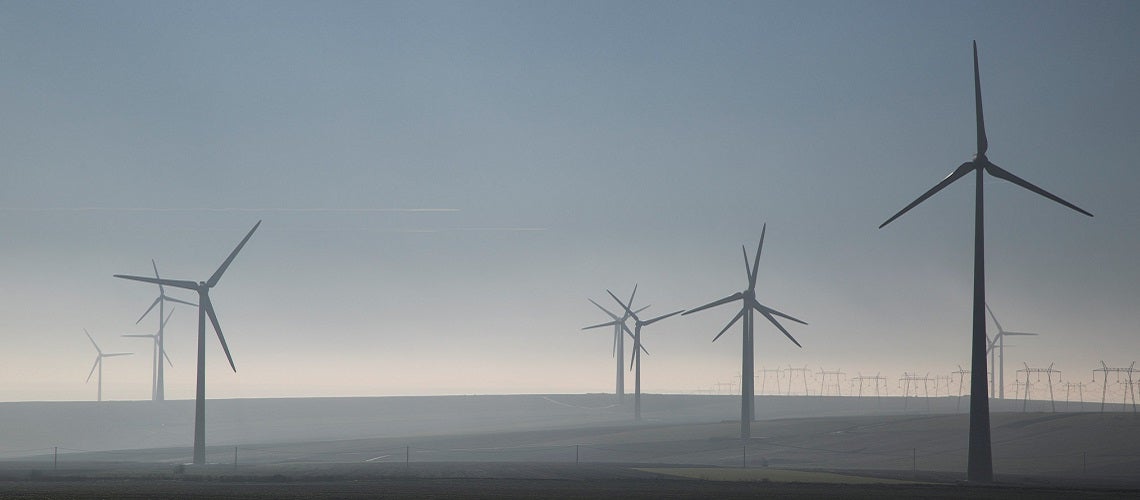 wind turbines
wind turbines
2021 will be a pivotal year for climate action, culminating in November with COP26, for which countries are expected to submit revised or updated Nationally Determined Contributions (NDCs). At the same time, countries are also addressing the unprecedented health and economic crises caused by the COVID-19 pandemic. In response, they could use record levels of recovery spending to promote green growth, identify opportunities for decarbonization and resilience, and further drive NDC implementation.
Over the past five years, the World Bank Group’s NDC Support Facility (NDC-SF) has gained insights into how countries can deliver on their low-carbon, resilient objectives. Since 2016, the NDC-SF has provided support for nations’ climate policies, budgeting, investment landscapes, and monitoring systems. It has also undertaken a set of “Deep Dives” in select countries to provide cross-sectoral and finance-related support.
"A new report from the NDC-SF examines common themes from NDC-SF’s projects in more than 50 countries and analyzes how to effectively support the implementation of the climate commitments countries made ahead of the Paris Agreement."
A new report from the NDC-SF examines common themes from NDC-SF’s projects in more than 50 countries and analyzes how to effectively support the implementation of the climate commitments countries made ahead of the Paris Agreement. Some of the key lessons for how to advance NDC implementation include:
- Integrating NDCs in national planning, budgeting and development strategies can improve buy-in and smooth the way for implementation
- An “NDC Implementation Roadmap” process can connect crucial stakeholders for climate action, within and, importantly, beyond ministries of environment—such as policymakers, regulators, and the private sector
- Risk mitigation finance offers a way to overcome barriers to climate-friendly investment—required for NDC implementation
- Tracking climate finance metrics in addition to mitigation and adaptation targets helps nations ensure investment gaps for climate action are identified
These draw from examples on-the-ground:
Supporting sectoral transitions in Bangladesh
In Bangladesh, the NDC-SF worked on both energy and transport projects. In one of South Asia’s fastest growing power sectors, the facility supported national planners to incorporate an NDC target—10% renewable energy by 2020—into the country’s power system master plan. The expertise developed during this effort laid the groundwork for future investment in grid stability and energy storage. On transport, opportunities for Bangladesh to reduce its carbon footprint are found in shifting highway freight to water. The NDC-SF supported the development of a low-carbon strategy for shipping on inland waterways, along with the Ministry of Shipping’s work to calculate greenhouse gas emissions from inland water transport and add them to the national emissions inventory.
Boosting planning capacity in Rwanda
In Rwanda, the NDC-SF assisted the government with the country’s NDC revision, which was submitted last year. Over the process, the Rwandan government engaged key stakeholders, identified mitigation and adaptation priorities, and was able to make better projections for greenhouse gas emissions. The NDC-SF also financed the creation of a monitoring framework for the mitigation and adaptation targets of Rwanda’s NDC. This work also helped boost the government’s ability to mobilize public and private resources for climate goals. To build on these efforts and implement the revised NDC, an NDC-SF Deep Dive is underway in Rwanda to help the government accelerate private investment in climate projects spanning sectors from waste management to forestry.
Supporting adaptation action in Guatemala
Guatemala is among the 10 countries in the world most affected by extreme climate events, which are already reducing crop yields, and causing food insecurity in certain areas. Because of these threats, Guatemala’s NDC emphasizes climate vulnerability. The NDC-SF supported the government in the implementation of the country’s NDC roadmap, developed through a participatory, multi-sectoral process. The roadmap built capacities in planning, implementing, and monitoring adaptation measures under the NDC. The work provided a strong basis for dialogue and coordination for the implementation of NDC adaptation measures. In addition, synergies with mitigation targets were considered in the prioritization of adaptation measures, which strengthens overall NDC implementation.
As part of the Bank Group’s focus on ramping up support for NDCs including as part of green recovery pathways from the pandemic, the NDC-SF will become part of a new umbrella trust fund: the Climate Support Facility. As part of this new fund, the work will continue to complete revised NDCs, as well as expand assistance for long-term low-carbon and climate-resilient strategies (LTSs) and scale up support for climate-compatible COVID-19 economic recovery packages. These efforts are already well underway in more than 30 countries, and with the deployment of 15 experts that will advise Ministries of Finance on how to ensure economic recovery measures can help address climate change. Through these efforts, the NDC-SF’s enduring legacy will be on better integrating climate in economic and financial decision-making in governments, helping countries meaningfully drive ambitious climate action.



Join the Conversation